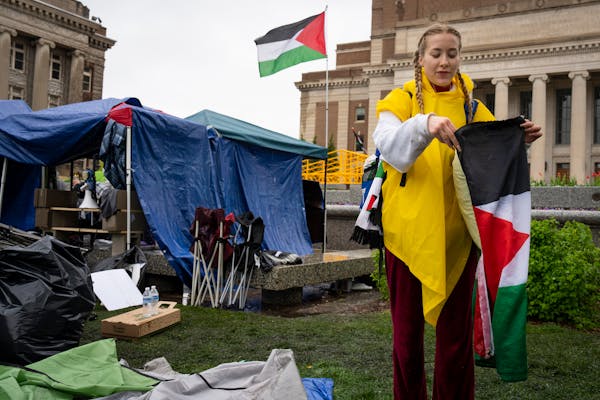The whiff of doughnuts and street food in the air and a jazz quintet in Minneapolis' Peavey Plaza signaled the opening concert of this year's Minnesota Orchestra Sommerfest on Friday evening.
Inside Orchestra Hall, the heat was on, as a scintillating performance of Enesco's Romanian Rhapsody raised the curtain on "Música Juntos" (Music Together), a three-week celebration of music from Latin America.
So why did a Romanian composer kick off the evening? The explanation — that European folk music informed Latin American idioms — wasn't totally convincing.
But it mattered little. The performance of Enesco's Rhapsody positively sizzled in conductor Osmo Vänskä's high-octane interpretation.
A screeching piccolo solo by Roma Duncan sliced thrillingly through the crackling textures as the violins spun frantically toward the piece's bacchanalian conclusion.
From then on it was Latin America all the way. Peruvian composer Jimmy López poured lashings of percussion into "Perú Negro," a 17-minute piece he describes as "an homage to our Afro-Peruvian heritage."
The orchestra's four percussionists worked hyperactively at a phalanx of instruments including ratchets, temple blocks and crash cymbals, creating a jungle rumble of rhythms underpinning the music.
The sheer physicality of Vänskä's conducting — lunging, jabbing, swooping as he cued instrumental entries — had a galvanic effect on the performance, which had a primeval, epic quality about it.
You needed to catch a breath afterward, and the inclusion of the laid-back "Aria" from Heitor Villa-Lobos' Bachianas Brasileiras No. 5 let you do it.
Soprano Goitsemang Lehobye, who sang on the Minnesota Orchestra's South Africa tour last summer, made a soulful impression in the vocal part, semi-circled by the eight cellists Villa-Lobos specified for the accompaniment.
Part two of the evening brought a switch to Mexico for the Danzón No. 2 of the contemporary composer Arturo Márquez. Snaky interplay between piano, clarinet and oboe set an evocative ballroom ambience, and principal trumpet Manny Laureano played a smoky solo as the temperature heightened.
The most nuanced music of the evening came in the closing item, the Variaciones Concertantes of Argentine composer Alberto Ginastera.
The somewhat academic title of the Variaciones is misleading, as it is a notably emotional and often introspective piece of writing. Principal cello Anthony Ross set the tone in a dark-hued account of the introduction, where his solo lines were counterpointed by the delicate harp shadings of Kathy Kienzle.
There were further opportunities for the orchestra's principal players to step out in Ginastera's solos. Violist Rebecca Albers and double bassist Kristen Bruya both dug deep into the ruminative underbelly of Ginastera's music.
Why the Variaciones isn't heard more often in orchestral concerts is something of a mystery, as it's a tinglingly atmospheric piece.
But the road less traveled is what festivals should be all about, and there is plenty more intriguing repertoire to come as "Música Juntos" continues through July and early August.
Terry Blain is a freelance classical music critic for the Star Tribune. Reach him at artsblain@gmail.com.

Helen Simonson is in Jane Austen mode with 'The Hazelbourne Ladies Motorcycle and Flying Club'
As hip-hop grows in China, its performers seek a voice that reflects their lived experiences
Comcast blacks out 15 regional sports networks in contract dispute with distributor
Movie Review: Bold, audacious 'I Saw the TV Glow' explores fandom, identity and the way we remember

